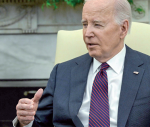You are here
The truth about development aid
May 08,2017 - Last updated at May 08,2017
US President Donald Trump’s recently released 2018 budget blueprint proposes deep cuts in US foreign aid, prompting a discussion on the role of such spending in improving the health and wellbeing of the world’s most vulnerable people.
This discussion is important, because, when it comes to reducing many of the world’s greatest inequities, aid matters as much as ever — and perhaps even more — for reasons that are not widely understood.
In the last 25 years, foreign-aid programmes have helped usher in an era of unprecedented progress in the developing world.
Child mortality and extreme poverty have been halved.
Innovative multilateral partnerships like the Global Fund and Gavi, the Vaccine Alliance — whose the US is the largest funder — have saved millions of lives, as they have reduced the burden of infectious diseases such as malaria, HIV and tuberculosis.
The Bill & Melinda Gates Foundation has been proud to collaborate with these initiatives in reducing the costs of vaccinations and other interventions, thereby boosting their measurable impact on global health.
Experience shows that health and development programmes pay enormous economic dividends. For every dollar invested in childhood immunisations, for example, developing countries realise $44 in economic benefits.
Yet most people are unaware of the tremendous progress that development aid has enabled.
In a recent survey of 56,409 people in 24 countries, only one in 100 knew that global poverty has been reduced by half.
More than two-thirds thought extreme poverty has increased.
Such popular misperceptions reinforce a pessimistic narrative that renders foreign aid budgets politically vulnerable.
Compounding the problem, donor-country populations often overestimate the amount of money their governments spend on aid.
In the US, foreign aid makes up less than 1 per cent of the federal budget, yet a recent public opinion survey found that 73 per cent of Americans believe aid contributes “a great deal” or “a fair amount” to the national debt.
There is one more misperception clouding donor countries’ judgment: the idea that aid to developing countries is an act of sheer generosity, with no tangible benefits for the donor.
The truth is quite the opposite. Indeed, it is in developed countries’ own interest, in both security and economic terms, to help fund development programmes.
Without aid funding, rising poverty and instability can draw developed countries into faraway conflicts and bring instability to their doorsteps, in the form of immigration and refugee crises, as well as pandemics.
By contrast, when aid is used to support rising incomes in developing economies, it can create export-oriented jobs at home.
Of America’s top 15 trading partners — that is, self-sufficient countries that consume US goods and services — 11 are former aid recipients.
Many more developing countries are taking ownership of their future. They are contributing more to their own development, through domestic public programmes supported by smart tax and fiscal policies.
And they are placing a high priority on investments in critical areas, including education, basic health care, and increased agricultural productivity — the building blocks of a self-sufficient and prosperous future. Private business and capital are also expanding their role in development projects.
Still, for now, donor aid remains essential to fill gaps in domestic funding, to address market failures, and to encourage more private-sector investment.
And make no mistake: despite the tremendous gains of the last couple of decades, much work remains to be done to sustain progress on health and development.
More than a billion people still live on less than a dollar per day.
Every year, more than three million babies die in their first month of life.
Addressing these and other enduring problems — part of the ambitious set of health and development targets that United Nations has set for 2030, as part of the Sustainable Development Goals — would be all but impossible without the continued delivery of development aid.
This is not to say that existing aid programmes are perfect. On the contrary, we must be vigilant about continuing to improve them.
But complaints that aid money is not being used as effectively as it could be greatly exaggerate the problem.
The truth is that, thanks to extensive experience designing and implementing cost-effective aid programmes, poorly used funds represent a tiny fraction of the total invested in aid.
The bigger problem is a lack of information. That is why those of us in the development field must work hard to improve communication with policymakers and the public, demonstrating how development aid works and the progress it has facilitated.
Despite current uncertainties, I am optimistic that progress in global health and development will continue.
Having been involved in these areas for nearly two decades, at the UN and now at the Gates Foundation, I know that the case for development aid is clear and compelling.
I believe the world will not turn its back on the historic challenge of reducing disparities in global health, eliminating extreme poverty, and building a more equitable and secure world.
The writer is chief strategy officer and president of Global Policy and Advocacy at the Bill & Melinda Gates Foundation. ©Project Syndicate, 2017. www.project-syndicate.org












